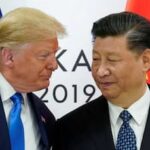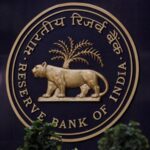Eighteen days after a deadly terror attack in Jammu and Kashmir’s Pahalgam sparked one of the tensest military escalations in years between India and Pakistan, the two nuclear-armed neighbours agreed on Saturday to halt hostilities.
The ceasefire, announced , ending four days of cross-border missile strikes, drone swarms and deadly shelling that left civilians and soldiers dead.
As the guns fall silent here’s how the crisis unfolded, day by day:
April 22: Gunmen target tourists in Pahalgam
At least 25 tourists and a local pony operator are killed as militants open fire in Baisaran, near Pahalgam in south Kashmir. The Resistance Front (TRF), an offshoot of Lashkar-e-Taiba, claims responsibility. It was the first deadly attack on tourists in the region this year.
April 23: India downgrades ties and scraps water pact
New blames terror groups with “cross-border” linkages and suspends the 1960 Indus Waters Treaty with Pakistan.Diplomatic ties are downgraded, with India expelling half the Pakistani mission in Delhi and top defence officials.
April 24: Borders close and airspace is shut
India cancels all visas for Pakistani nationals under SAARC, ordering them to leave within 48 hours. The Attari-Wagah land border is sealed. In response, Pakistan closes its airspace to Indian airlines and cancels visas for Indian nationals.
April 25: Cross-border firing erupts along the LoC
Pakistani troops open fire at multiple points along the Line of Control in and Kashmir. It marks a sharp escalation, just weeks after a flag meeting between senior commanders.
April 26: Iran offers to mediate, US urges calm
Iran calls both nations “brotherly neighbours” and offers to broker talks. US President says India and Pakistan will “figure it out”, but warns of rising tensions.
April 30: Shelling continues for fifth night
Pakistani forces fire across the LoC, targeting Kupwara, Baramulla and Akhnoor districts. India’s military says it responds “in a measured and effective manner”.
May 1: US-India talks call for justice and restraint
Minister of External Affairs (EAM) S Jaishankar tells US Secretary of State Marco Rubio that the Pahalgam attackers must be brought to justice. Rubio encourages India to de-escalate and maintain peace in the region.
May 3: Mail, trade routes suspended
India halts mail and parcel exchanges with Pakistan, cutting off post by both air and land. A ban is imposed on all imports and transit of goods from Pakistan, tightening the pressure on Islamabad.
May 7: India strikes terror sites in Pakistan and PoK
India launches Operation Sindoor, its most expansive military operation since in 2019. Nine terror camps are targeted in Pakistan and Pakistan-occupied Kashmir. In retaliation, Pakistani shelling kills 12 civilians and injures 40 across the LoC.
May 8: Drone and missile strikes escalate conflict
Pakistan fires missiles and drone swarms at 15 Indian military targets. India responds by destroying air defence systems in Lahore.
May 9: Drones swarm border areas as is suspended
For the second straight night, Pakistani drones are sighted at 26 locations from Baramulla to Bhuj. PM convenes a security meet with military chiefs. The Indian Premiere League is suspended for a week amid the crisis.
May 10: Ceasefire announced after days of escalation
India and Pakistan agree to stop firing after direct talks between their military chiefs. Ceasefire takes effect from 5 pm. India says it will maintain its “firm and uncompromising stance against terrorism” even as guns fall silent. Another round of talks is set for 12 May.








